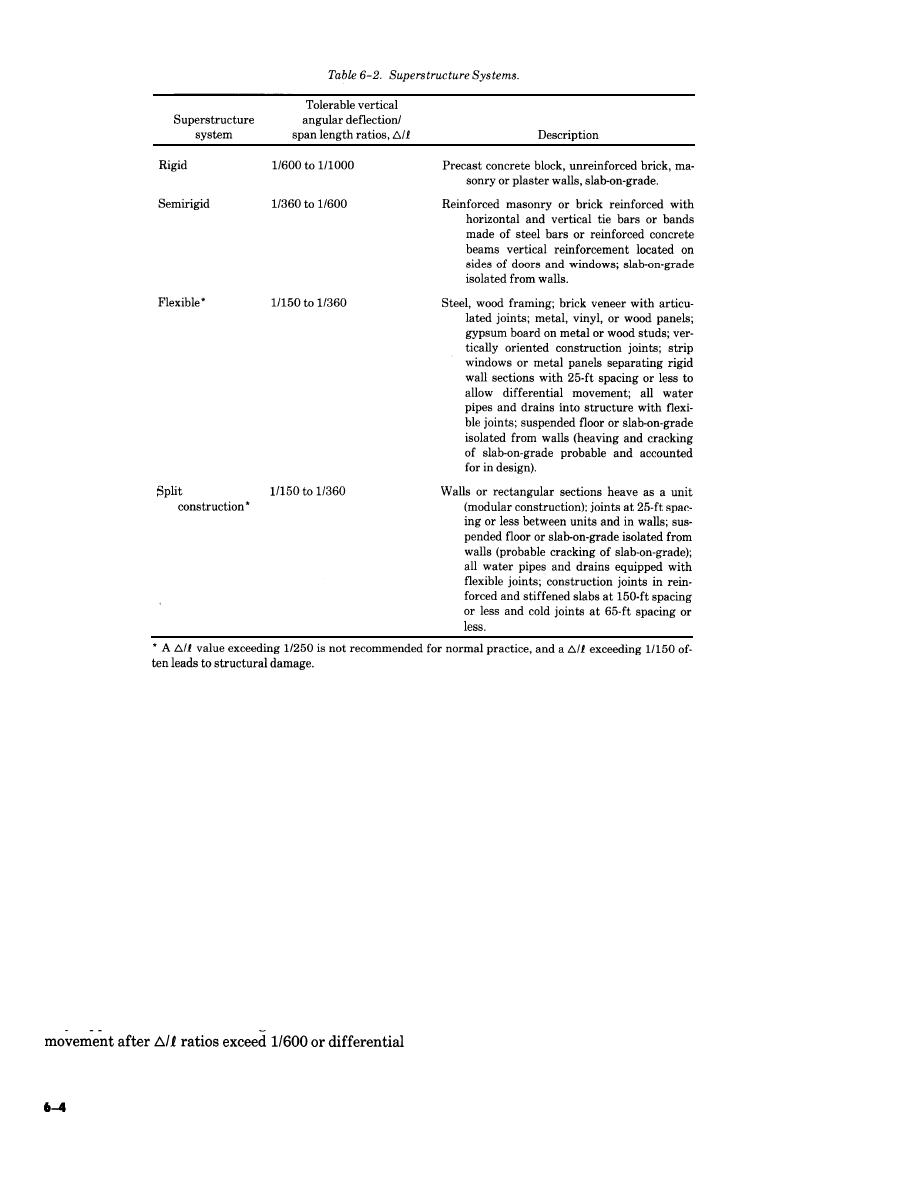
TM 5-818-7
b. Applications. Shallow footings may be used
ble of resisting bending such as reinforced concrete
where expansive strata are sufficiently thin to allow
shear walls. Several examples of frame and wall con-
location of the footing in a nonexpansive or low-swell-
struction are provided in appendix C.
ing stratum (fig. 6-2).
6-2. Shallow individual or continuous
(1) A structural floor slab should be suspended on
footings
top of the footing (fig. 6-2a) or the slab-on-grade
should be isolated from the walls (fig. 6-2b). The slab-
a. Susceptibility y to damage. Structures supported
on-grade should be expected to crack.
by shallow individual or continuous wall footings are
(2) Figure 6-3 illustrates examples of interior con-
susceptible to damages from lateral and vertical move-
struction for a slab-on-grade. Interior walls may be
ment of foundation soil if provisions are not made to
suspended from the ceiling or supported on the floor.
accommodate possible movement. Dishing or substan-
A flexible joint should be provided in the plenum be-
tial settlement may occur in clays, especially in initial-
tween the furnace and the ceiling. Sewer lines and
ly wet soil where a well-ventilated crawl space is con-
other utilities through the floor slab should be permit-
structed under the floor. The crawl space prevents
ted to slip freely.
rainfall from entering the soil, but the evaporation of
(3) Swelling of deep expansive soil beneath a non-
moisture from the soil continues. Center heave or edge
expansive stratum may cause differential movement
downwarping (fig. 1-2) can occur if the top layer of
of shallow footings if the moisture regime is altered in
the deep soil following construction (e.g., change in
may appear in walls not designed for differential
groundwater level, or penetration of surface water
into deep desiccated soil). Excavations for crawl spaces
movement exceeds about 0.5 inch.


 Previous Page
Previous Page
